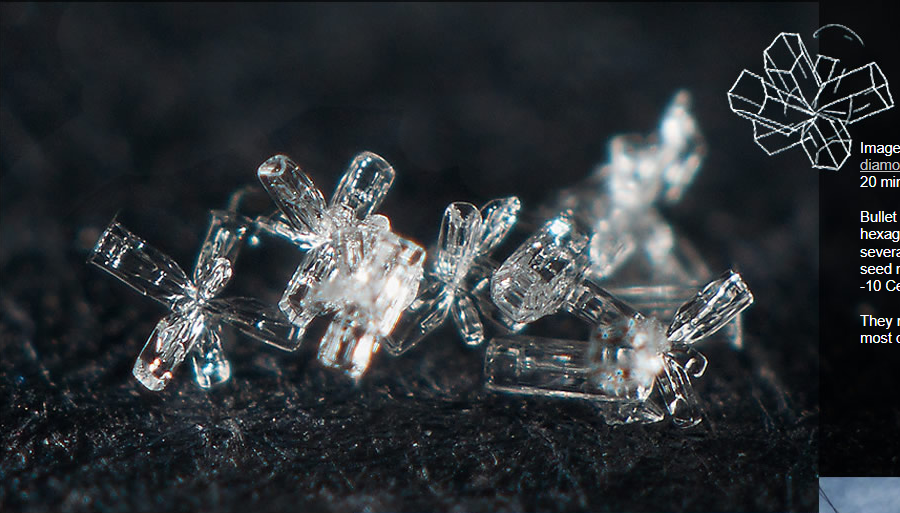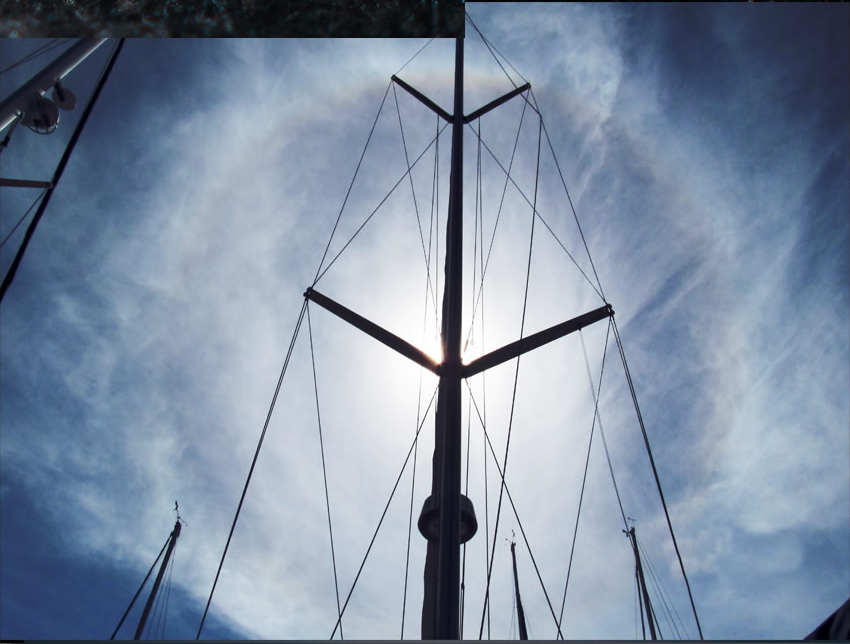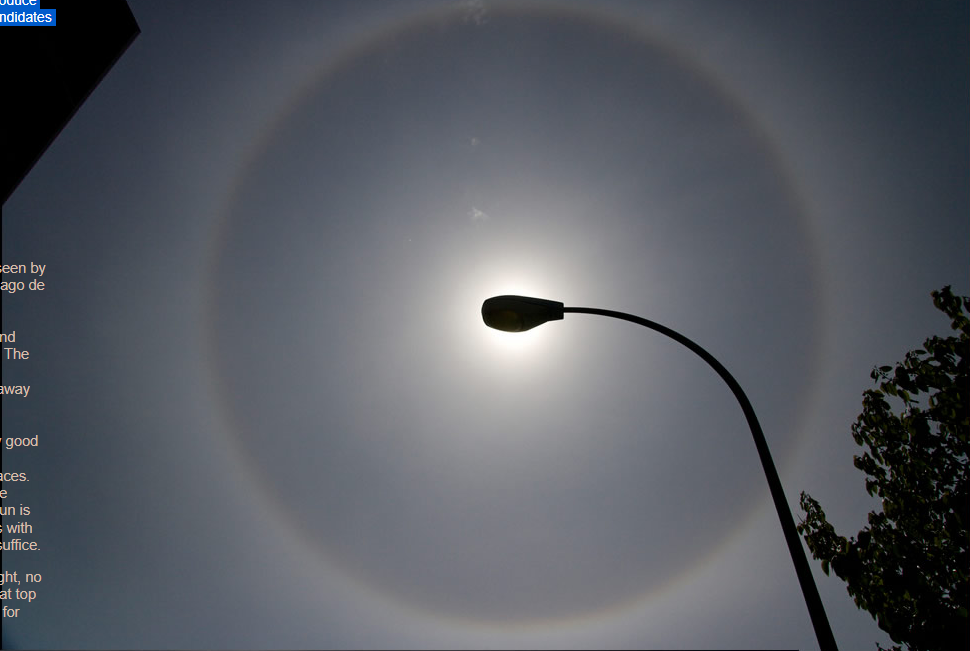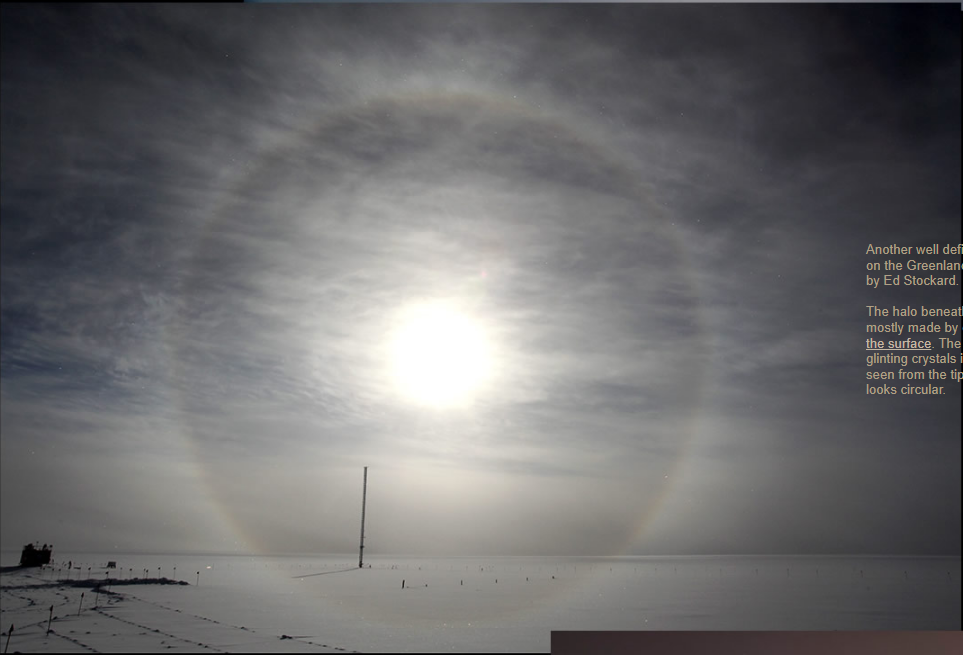Bullet Rosettes & 22 degree Halos - OPOD
Bullet Rosettes & 22 Degree Halos: A Closer Look at Atmospheric Optics
When it comes to atmospheric optics, there are fascinating phenomena that occur in the sky, such as bullet rosettes and 22° halos. These captivating optical displays have been the subject of much intrigue and study among researchers and enthusiasts alike. In this article, we will delve deeper into these phenomena, exploring their formation, characteristics, and potential causes.
Understanding Bullet Rosettes
Bullet rosettes, also known as cluster crystals, are unique hexagonal columns that are joined together. They are believed to form when multiple columns grow outward from a common seed nucleus at temperatures ranging from -5 to -10 degrees Celsius. These delicate ice crystals play a significant role in the creation of various halos observed in the sky, including the widespread 22° halo.
The Enigmatic 22° Halo
The 22° halo is a striking optical phenomenon that often graces the sky with its presence. This halo appears as a beautiful, diffuse ring around the sun or moon, creating a captivating spectacle for observers. The formation of the 22° halo involves the refraction of light between two facets of an ice hexagonal prism inclined at 60 degrees. The minimum ray deviation, which gives rise to the halo's inner radius, is precisely 22 degrees. Additionally, other rays deviate to a greater extent, contributing to the halo's outer white sheath.
Exploring Halo-Forming Crystals
Determining the crystals responsible for the formation of halos has been a subject of scientific investigation. The prevailing explanation suggests that randomly oriented hexagonal columns are the primary culprits. These columns can be found drifting in high cirrus clouds or even in diamond dust particles. However, it is worth noting that columns are not truly randomly oriented due to aerodynamic drag, which tends to align them horizontally. To address this, researchers have proposed the involvement of short columns with comparable length and breadth, as they would exhibit a more random orientation. However, the presence of an adequate number of short columns in crystal samples remains a challenge.
An Alternative Perspective
Another intriguing hypothesis suggests that completely random orientations may not always be necessary for halo formation. Ray tracings have shown that wobbly columns with large but non-random tilts can generate circular halos. However, these halos may not exhibit uniform brightness. It has been observed that uniformity tends to increase under high sun conditions, where large crystals, which wobble the most, are more prevalent. However, these larger crystals are also more likely to possess flaws, potentially resulting in the soft, less well-defined halos often observed in the sky.
The Role of Bullet Rosettes
Cluster crystals, or bullet rosettes, are relatively common in the atmosphere. These crystals tumble and present icy hexagonal prism sections at various orientations. As a result, they have the potential to produce sharp, bright, and well-defined halos. This makes them strong candidates for contributing to the formation of many 22° halos observed in the sky.
Unraveling the Characteristics of the 22° Halo
To gain a deeper understanding of the 22° halo, it is essential to examine its distinct characteristics. When observed closely, one can notice distinct red and yellow hues at the inner edge of the halo, while the center appears darker. The brightness of the halo gradually fades away over an approximate span of 10 degrees. Optically good ice prisms with minimal bubble inclusions or indented faces are required to produce such a halo. Large wobbly crystals, although capable of generating the halo, are often flawed. Nevertheless, when the sun is positioned high in the sky, smaller crystals with smaller tilts may just suffice to create this mesmerizing optical phenomenon.
A Glimpse at Other 22° Halos
Apart from the aforementioned characteristics, there are various other manifestations of the 22° halo that have been observed and documented. For instance, on the Greenland ice sheet, crystals resting on the surface contribute to the halo below the horizon. This creates a unique path for the ground glinting crystals, forming a hyperbola that appears circular when viewed from the tip of the halo cone. Furthermore, in Finland, a diffuse and weak lunar 22° halo was observed, highlighting the diverse range of halos that can be encountered in different atmospheric conditions.
Exploring Halo-Forming Candidates
In addition to bullet rosettes and large wobbly columns, there is a third possibility when it comes to the formation of 22° halos. Small columns, measuring less than approximately 30 microns in length, are less influenced by aerodynamic drag and may exhibit near-random orientations. This introduces another intriguing effect known as diffraction, which can blur the halo in a manner similar to tiny water droplets producing a broad and diffuse fogbow rather than a rainbow. Hence, these smaller columns play a unique role in the formation of 22° halos.
A Note on Reliable Information
When exploring atmospheric optics online, it is essential to exercise caution and critically evaluate the information found. Unfortunately, there is often misinformation or misleading statements present in online resources. Therefore, it is advisable to verify the accuracy of the information and rely on reputable sources for a comprehensive understanding of atmospheric phenomena.
In conclusion, bullet rosettes and 22° halos are captivating elements of atmospheric optics that continue to captivate researchers and sky enthusiasts alike. By studying their formation, characteristics, and potential contributing factors, we can gain a deeper appreciation for these awe-inspiring optical displays that grace our skies. So, the next time you find yourself gazing at the heavens, keep an eye out for these mesmerizing phenomena and let their beauty fill you with wonder.

Bullet Rosettes & 22° Halos
Imaged by Jakub Badelek who collected them from diamond dust. He left black paper board outside for 20 minutes at -10 Celsius.
Bullet Rosettes or cluster crystals are joined hexagonal columns. They are thought to form when several columns grow outwards from a common seed nucleus at temperatures of about -5 to -10 Celsius.
They may be the source of many showings of the most common halos in the sky, the 22° halo.
A beautiful and rather diffuse and soft 22° halo imaged by Tom Peck.


The 22� halo
Light refracts between two facets of an ice hexagonal prism inclined at 60�. The minimum ray deviation is 22� corresponding to the halo�s inner radius. Plenty of other rays deviate more and these contribute to the halo's outer white sheath.
What crystals form the halo? The standard explanation is that the culprits are randomly oriented hexagonal columns. They could drift in high cirrus or in nearby in diamond dust. However, columns are not randomly oriented because aerodynamic drag aligns them horizontal. Short columns with their length comparable to breadth are then invoked as they will be more randomly oriented. All very well, but not enough short columns are found in crystal samples.
An alternative is that completely random orientations are not always needed. Ray tracings show that wobbly columns with large but non random tilts can generate circular halos. But the halo is not uniformly bright. Uniformity does increase somewhat at high sun. Large crystals wobble the most. Yet, they are also most likely to have flaws. They might produce the soft less well defined halos often seen. The one at right is a possibility.
Cluster crystals, bullet rosettes are fairly common. They tumble. They present icy hexagonal prism sections at all orientations. They could produce sharp, bright well defined halos. Good candidates for many 22� halos.

A near perfect 22° halo seen by Jonathan Shock at Santiago de Compostela, Spain.
There are distinct reds and yellow at the inner edge. The centre is dark. The halo brightness fades gently away for perhaps 10°.
This halo needs optically good ice prisms, few bubble inclusions, or indented faces. Large wobbly crystals are usually flawed. But the sun is high and smaller crystals with smaller tilts might (just) suffice.
The halo is uniformly bright, no pronounced brightening at top and bottom. A candidate for cluster crystals?

Another well defined halo, this time on the Greenland ice sheet. Imaged by Ed Stockard.
The halo beneath the horizon is mostly made by crystals resting on the surface. The path of the ground glinting crystals is a hyperbola but seen from the tip of the halo cone it looks circular.

A very diffuse and weak lunar 22° halo seen in Finland by Marko Riikonen.
We have as 22° halo forming candidates cluster crystals or - when the halo is not uniformly bright - large wobbly columns.
There is a third possibility. Small columns less than about 30 micron long are less well aligned by aerodynamic drag. If small enough they can be near random.
Smallness introduces another effect. Diffraction blurs the halo in the same way that tiny water droplets produce a broad diffuse fogbow rather than a rainbow.
A 22 degree halo competition
Unfortunately atmospheric optics are not always reliably described on the web.
Google "22 degree halo". Google features a popular and oft linked page. How many errors, misleading statements and outright scientific howlers can you find? 5, 10.. ..more?

Note: this article has been automatically converted from the old site and may not appear as intended. You can find the original article here.
Reference Atmospheric Optics
If you use any of the definitions, information, or data presented on Atmospheric Optics, please copy the link or reference below to properly credit us as the reference source. Thank you!
-
<a href="https://atoptics.co.uk/blog/bullet-rosettes-22-degree-halos-opod/">Bullet Rosettes & 22 degree Halos - OPOD</a>
-
"Bullet Rosettes & 22 degree Halos - OPOD". Atmospheric Optics. Accessed on December 22, 2024. https://atoptics.co.uk/blog/bullet-rosettes-22-degree-halos-opod/.
-
"Bullet Rosettes & 22 degree Halos - OPOD". Atmospheric Optics, https://atoptics.co.uk/blog/bullet-rosettes-22-degree-halos-opod/. Accessed 22 December, 2024
-
Bullet Rosettes & 22 degree Halos - OPOD. Atmospheric Optics. Retrieved from https://atoptics.co.uk/blog/bullet-rosettes-22-degree-halos-opod/.